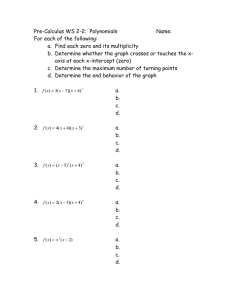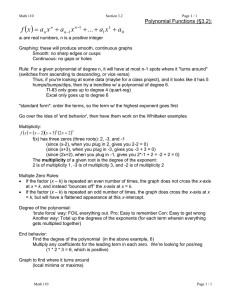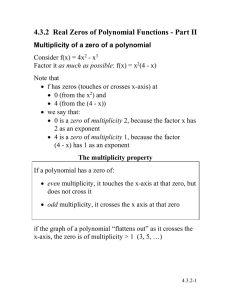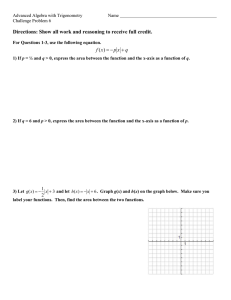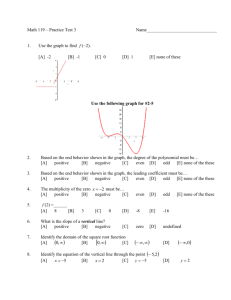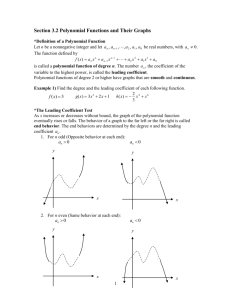End Behavior of a polynomial Multiplicity of a “zero” (of an x
advertisement
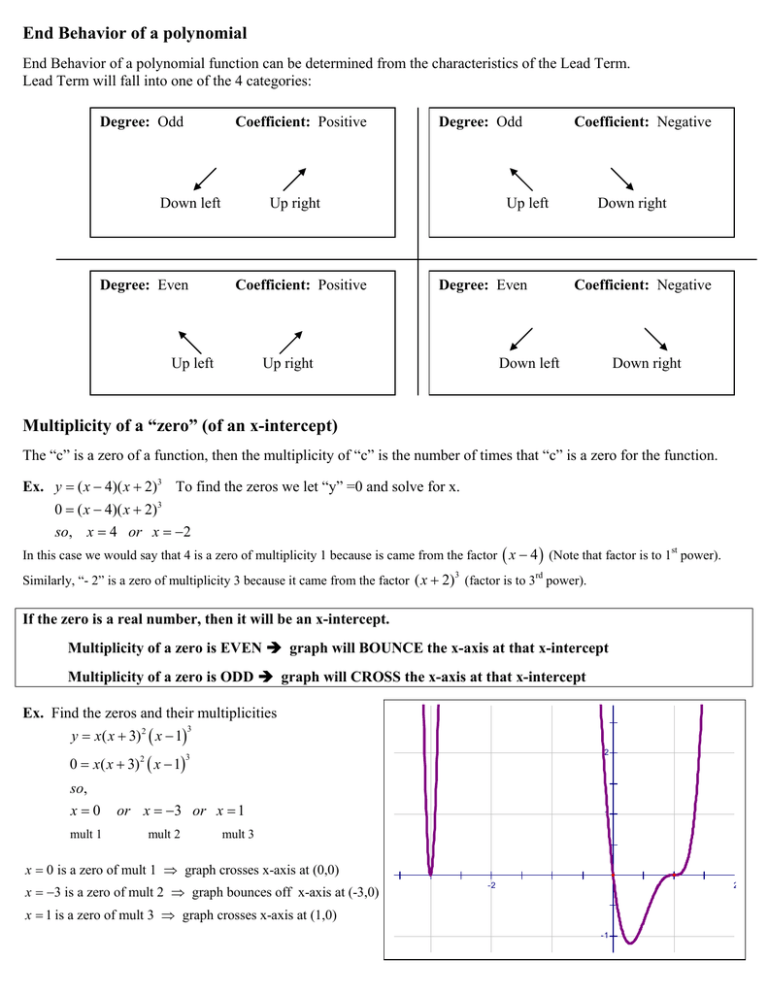
End Behavior of a polynomial End Behavior of a polynomial function can be determined from the characteristics of the Lead Term. Lead Term will fall into one of the 4 categories: Degree: Odd Coefficient: Positive Down left Degree: Even Degree: Odd Up right Coefficient: Positive Up left Coefficient: Negative Up left Degree: Even Up right Down right Coefficient: Negative Down left Down right Multiplicity of a “zero” (of an x-intercept) The “c” is a zero of a function, then the multiplicity of “c” is the number of times that “c” is a zero for the function. Ex. y = ( x − 4)( x + 2)3 To find the zeros we let “y” =0 and solve for x. 0 = ( x − 4)( x + 2)3 so, x = 4 or x = −2 In this case we would say that 4 is a zero of multiplicity 1 because is came from the factor ( x − 4 ) (Note that factor is to 1st power). Similarly, “- 2” is a zero of multiplicity 3 because it came from the factor ( x + 2) (factor is to 3rd power). 3 If the zero is a real number, then it will be an x-intercept. Multiplicity of a zero is EVEN Î graph will BOUNCE the x-axis at that x-intercept Multiplicity of a zero is ODD Î graph will CROSS the x-axis at that x-intercept Ex. Find the zeros and their multiplicities 3 y = x( x + 3) 2 ( x − 1) 0 = x( x + 3) 2 ( x − 1) 2 3 so, x=0 mult 1 or x = −3 or x = 1 mult 2 1 mult 3 x = 0 is a zero of mult 1 ⇒ graph crosses x-axis at (0,0) x = −3 is a zero of mult 2 ⇒ graph bounces off x-axis at (-3,0) -2 2 x = 1 is a zero of mult 3 ⇒ graph crosses x-axis at (1,0) -1
